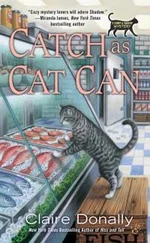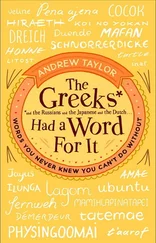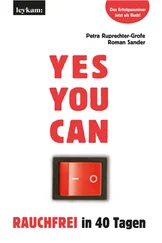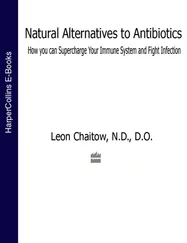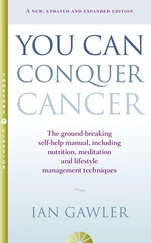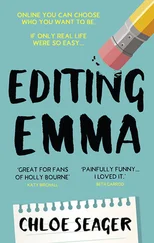Her name was Diane and I had known her intermittently for about a year. I had never flown with her, having met her in the Atlanta airport terminal, and she knew me under the alias Robert F. Conrad, a Pan Am first officer, an allonym I used on occasion. I was forced to maintain the nom de plume with her, for we developed a close and pleasing relationship, during the course of which, initially, she had delved into my personal background, including my educational history. Most pilots have a college degree, but not all of them majored in the aeronautical sciences. I told Diane that I had taken a law degree but had never practiced, since a career as an airline pilot had loomed as not only more exciting but also much more lucrative than law. She readily accepted the premise that a man might shun the courtroom for the cockpit.
She also remembered my concocted law degree. A few days after my arrival in her city she took me to a party staged by one of her friends and there introduced me to a pleasant fellow named Jason Wilcox.
“You two ought to get along. Jason is one of our assistant state’s attorneys,” Diane told me. She turned to Wilcox. “And Bob here is a lawyer who never hung out his shingle. He became a pilot instead.”
Wilcox was immediately interested. “Hey, where’d you go to law school?”
“Harvard,” I said. If I was going to have a law degree, I thought I might as well have one from a prestigious source.
“But you never practiced?” he asked.
“No,” I said. “I got my Commercial Pilot’s License the same week I took my master’s in law, and Pan Am offered me a job as a flight engineer. Since a pilot makes $30,000 to $40,000, and since I loved flying, I took the job. Maybe someday I’ll go back to law, but right now I fly only eighty hours a month. Not many practicing lawyers have it that good.”
“No, you’re right there,” Wilcox agreed. “Where do you fly to? Rome? Paris? All over the world, I guess.”
I shook my head. “I’m not flying at the moment,” I said. “I’ve been furloughed. The company made a personnel cutback last month and I didn’t have seniority. It may be six months or a year before they call me back. Right now I’m just loafing, drawing unemployment. I like it.”
Wilcox studied me with bemused eyes. “How’d you do at Harvard?” he asked. I felt he was leading up to something.
“Pretty well, I guess,” I replied. “I graduated with a 3.8 average. Why?”
“Well, the attorney general is looking for lawyers for his staff,” Wilcox replied. “In fact, he’s really in a bind. Why don’t you take the bar here and join us? I’ll recommend you. The job doesn’t pay an airline pilot’s salary, of course, but it pays better than unemployment. And you’ll get in some law practice, which sure as hell couldn’t hurt you.”
I almost rejected his proposal outright. But the more I thought about it, the more it intrigued me. The challenge again. I shrugged. “What would it entail for me to take the bar examination in this state?” I asked.
“Not much, really,” said Wilcox. “Just take a transcript from Harvard over to the state bar examiner’s office and apply to take the bar. They won’t refuse you. Of course, you’d have to bone up on our civil and criminal statutes, but I’ve got all the books you’d need. Since you’re from another state, you’ll be allowed three cracks at the bar here. You shouldn’t have any trouble.”
A transcript from Harvard. That might prove difficult, I mused, since the university and I were strangers. But then I’d never had any pilot’s training, either. And I had a valid-appearing FAA pilot’s license in my pocket stating I was qualified to fly passenger jets, didn’t I? My bumblebee instincts began buzzing.
I wrote to the registrar of the Harvard Law School and asked for a fall schedule and a law school catalogue, and within a few days the requested material was deposited in my mailbox. The catalogue listed all the courses necessary for a doctor of law from Harvard, and it also boasted some lovely logos and letterheads. But I still didn’t have the foggiest notion of what a college transcript looked like.
Diane was an Ohio University graduate, who had majored in business administration. I casually engaged her in a conversation revolving around her student years.
She had been heavily involved in campus activities, it developed, something of a playgirl in college. “You must not have done much studying,” I said jestingly.
“Oh, yes, I did,” she maintained. “I had a 3.8 average. In fact, I was on the dean’s list my senior year. You can have fun and still make good grades, you know.”
“Aw, come on! I don’t believe you had that kind of average. I’d have to see your transcript to believe that,” I protested.
She grinned. “Well, smart-ass, I just happen to have one,” she said, and returned from her bedroom a few minutes later with the document.
The transcript consisted of four legal-sized sheets of. lined paper and was, in fact, a certified photocopy of her four years of college work, attested to and notarized by the registrar. The first page was headed by the name of the university in large, bold letters, beneath which appeared the state seal of Ohio. Then came her name, the year she had graduated, the degree she had received and the college (College of Business Administration) awarding the degree. The remainder of the pages was filled, line by line, with the courses she had taken, the dates, the hours of credit she had accumulated and her grades. A grade average was given at the end of each year and a final entry noted her over-all average, 3.8. In the bottom right-hand corner of the last page was the Ohio University seal, with a notary’s seal superimposed and bearing the signature of the school registrar.
I committed the structure of the transcript to memory, absorbing it as a sponge absorbs water, before handing it back. “Okay, you’re not only sexy, you’re also brainy,” I said in mock apology.
I went shopping the next day at a graphic arts supply house, a stationery store and an office-supply firm, picking up some legal-sized bond paper, some layout material, some press-on letters in several different type faces, some artisf s pens and pencils, an X-Acto knife, some glue and a right-angle ruler, some gold seals and a notary’s press.
I started by simply cutting out the Harvard Law School logo and pasting it at the top of a piece of bond paper. I then affixed the school seal, also filched from the catalogue, beneath the school heading. Next I filled in my name, year of graduation, degree and then, using the right angle and a fine artist’s pen, I carefully lined several pages of the legal-sized bond. Afterward, using block press-on letters, I carefully entered every course required for a law degree from Harvard, my electives and my fictitious grades. Since Wilcox might see the transcript, I gave myself a three-year over-all grade average of 3.8.
The finished, pasted-up product looked like leavings from a layout artist’s desk, but when I ran the pages through a do-it-yourself copying machine, it came out beautifully. It had all the appearances of something coughed out by a duplicating computer. I finished the six-page counterfeit by attaching a gold seal to the bottom of the last page and impressing over it, in a deliberately blurred manner, the notary stamp, which I filled in by hand, using a heavy pen, and signing with a flourish the name of the Harvard Law School registrar, noting below the forgery that the registrar was also a notary.
Whether or not it resembled an actual Harvard transcript, I didn’t know. The acid test would come when I presented the phony document to the state bar examiner’s office. Wilcox had been practicing law for fifteen years, and had been an assistant state’s attorney for nine years. He also had a wide acquaintance among the state’s lawyers. He said I was the first Harvard graduate he’d ever met.
Читать дальше


